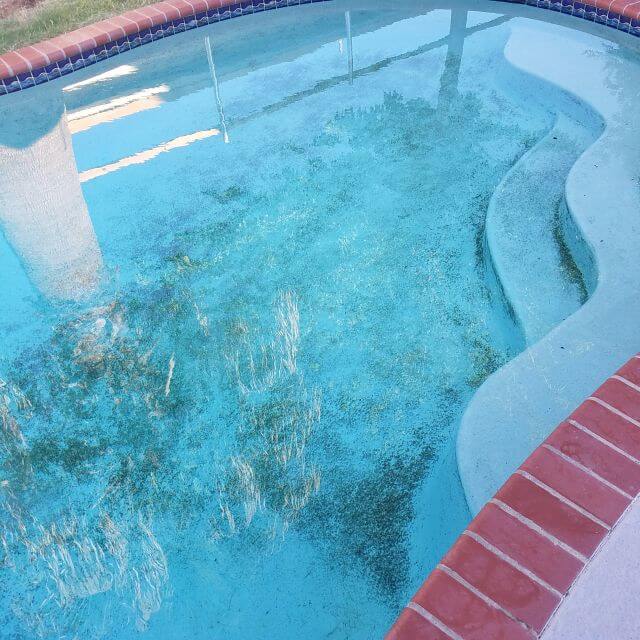When it comes to maintaining a pristine and inviting vinyl pool, black algae can often surreptitiously infiltrate the water and the pool liner, transforming a lovely oasis into a troubling sight. This tenacious organism typically thrives in environments that are poorly managed, and addressing this persistent issue can be both daunting and essential for any pool owner. Here, we delve into the fundamentals of identifying black algae, understanding its nature, effective treatment strategies, and preventative measures to ensure the longevity of your vinyl pool liner.
Understanding Black Algae
Black algae, scientifically known as Microcystis aeruginosa, are fundamentally different from your average green algae. While typical algae blooms usually present as a green haze in the water, black algae exhibit a dark green to almost black appearance that tends to cling stubbornly to surfaces. The most distinguishing factor is their unique structure: they possess a protective layer of gelatinous slime, which makes them resistant to most chlorine treatments. You might first notice these algae as dark spots on the walls or floor of your pool, which may also feel rough or patchy to the touch.
Recognizing a black algae infestation early can help mitigate its spread and reduce the extensive cleaning required later. Often, these organisms thrive in pool areas that have been neglected, or in places that maintain a lower sanitizer level. Understanding these nuances can aid in creating a more proactive approach to pool maintenance.
Identifying the Problem
The first step in tackling black algae is accurate identification. Here are a few quintessential signs you should be vigilant about:
- Appearance: Look out for dark spots that cling stubbornly to the vinyl liner; they may resemble small, hard, blackened spots.
- Location: Black algae often thrive in shaded areas of your pool, where chlorine levels may be lower.
- Texture: Unlike other forms of algae that could be easily brushed away, black algae requires more effort to dislodge due to its protective coating.
If identified promptly, you can prevent further proliferation, sparing your pool from extensive damage and costly repairs.
Cleaning and Treatment Methods
Once you’ve confirmed the presence of black algae, the next step is to initiate an aggressive treatment plan. Here are the methods commonly employed:
1. Brush It Away: Start by utilizing a stiff-bristled brush specifically designed for vinyl liners. This helps to break down the algae’s protective coating, allowing for more effective chemical treatments later on.
2. Shock Treatment: After brushing, apply a strong dose of calcium hypochlorite (the type commonly used for shocking pools). Ensure that the pH level of your pool water is balanced before performing this procedure, as a balanced chemical composition will significantly enhance the effectiveness of the shock. Usually, keeping your chlorine levels around 10-20 ppm is recommended for optimal treatment.
3. Algaecide Application: Consider introducing a specialized algaecide formulated for black algae. Always follow the manufacturer’s recommendations regarding dosage and application methods. When applied after brushing and shocking, it can penetrate the algae’s protective layer and effectively kill it off.
4. Filtration: Maintain your filtration system running continuously for a minimum of 24-48 hours post-treatment. This will aid in trapping remaining algae particles that may still linger in the water, ensuring a clearer pool.
5. Vacuuming: Finally, vacuum your pool thoroughly to remove any dead algae and debris. Regular vacuuming is crucial, especially during the recovery phase, to keep your pool clean and to prevent future outbreaks.
Prevention Strategies
1. Regular Water Testing: Conduct routine tests on your pool water’s pH, chlorine, and total alkalinity. Keeping these levels within the recommended ranges can inhibit the growth of algae.
2. Consistent Cleaning: Regular brushing and skimming help maintain a clean pool environment. Brushing the walls and floor at least once a week effectively disrupts any developing algae.
3. Balancing Sanitizers: When using chlorine, always ensure adequate levels. Managing your pool’s water chemistry can deter black algae growth. Always keep sanitizer levels appropriately dosed, especially after heavy usage or rain.
4. Maintenance of Proper Circulation: Ensure that your pool has appropriate water circulation. Fixing any issues related to pumps and filters will help maintain a healthy pool environment, limiting stagnant water zones where algae tend to flourish.
Conclusion
Addressing black algae is undeniably crucial in preserving the aesthetics and functionality of a vinyl pool liner. Identifying, treating, and preventing its return requires a consistent approach, focusing on routine maintenance and proper chemical balance. By staying vigilant and proactive, you can ensure your pool remains a shimmering centerpiece for relaxation and enjoyment during warmer months. Embrace the challenge and turn your attention toward creating a sparkling, algae-free pool that you and your family can enjoy for years to come!
